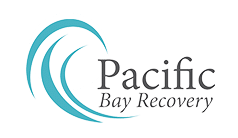As we all know, we are in an opioid epidemic in this country. But the good news is that the numbers are beginning to go down. Having said that, the job is still not done. The main reason we still high opioid use (and eventually abuse) is that we still have a very high prevalence of chronic pain (almost 1 in 10). And opioids are still being overprescribed. Hence, there is a pressing need to use opioid alternatives for chronic pain relief.
Not only that opioids have a very high addiction potential (15-fold greater risk for those who have been taking opioids for three or more months), but also they are not very effective in the management of chronic pain. There are a number of alternative strategies that have been found to be effective against chronic pain, such as cognitive behavioral therapy, acupuncture, medical massage, physical therapy, etc.
Chronic pain is defined as a pain condition that lasts for more than six months. Studies have shown that chronic pain involves the same areas of the brain as an emotional disturbance. Emotional pain is treated with alternative methods, so it is worth exploring if chronic pain can be effectively managed that way as well.
Many healthcare providers have made initiatives to minimize the chance of opioid addiction. Pain clinics assess people for risk of addiction, have them sign a medication contract, educate and counsel them on the risks of addiction and other side effects, perform urine drug testing, undertake pill counts, etc. But it has yet to be seen whether these efforts made any difference in preventing addiction.
The opioid alternatives that are being used for chronic pain management include nonsteroidal anti-inflammatory drugs (NSAIDs), antidepressants, and antiseizure medications. Nonpharmacologic options include cognitive behavioral therapy, exercise therapy, physical therapy, etc. There are also some interventional approaches such as nerve blocks, neuromodulation, etc. These methods have been found to be effective in chronic pain management.
There is now a one-stop-shop type of pain clinics where the patient can see a physician, a physical therapist, a psychologist, a massage therapist, an acupuncturist, etc., for one’s pain complaint. However, these approaches can be expensive with limited or no insurance coverage.
It is being widely understood that opioids can only provide short term from severe acute pain and are ineffective for lasting relief from chronic pain. Instead, a better approach for the latter is to use a combination of alternative modalities mentioned above. But these methods take patience and effort because complying with them takes commitment and the results are not immediate. But when the patient sticks with them, the results are often very rewarding.
It is important to note that these alternative methods are much more effective once somebody is not on opioids. The reason may be psychological, at least in part, that the patients have gotten used to finding immediate relief that comes with taking opioids even if its temporary. But working closely with the therapists and with some encouragement and perseverance, patients are able to overcome chronic pain through these safe methods.

